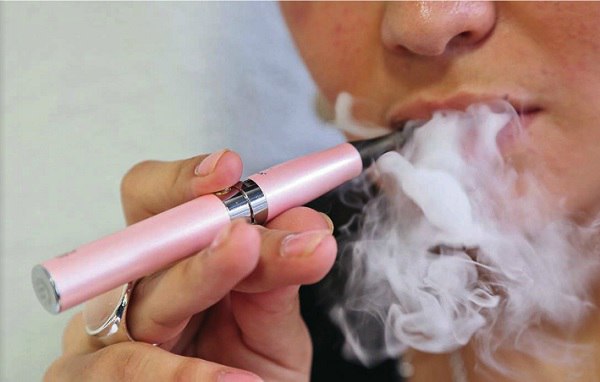
If you read the headline to this article without continuing on, the people at French consumer magazine 60 Million Consumers will have accomplished their goal. Sadly, this piece of “research” comes hot on the heels of an actual piece of research which reviewed the existing evidence on the same subject and concluded the exact opposite. Something unusual is clearly going on here, and press reporting of the topic is terrifyingly misleading. To find out what they actually determined from the test, it’s very, very important to look what they did to come to their conclusion. The answer would literally melt your face off.
The Study
Alongside an expose of the chemicals you’ll find in food, cosmetics, detergents and many other products, the analysis of ten different models of e-cig (both disposable and rechargeable) appears in the September issue of 60 Million Consumers. Using a “new method” of testing, the researchers investigated the quantities of harmful chemicals found in e-cigs. The actual research referenced above looked at the same thing, and came to the conclusion that the harmful components in e-cigs are found in well below (often over 100 times lower than) the maximum safe exposure limits of those chemicals.
In the full article from 60 Million Consumers, there is no real mention of the method used to test the e-liquids – they say “We didn't use a smoking machine … We set-up a facility capable of simulating the mechanism of an electronic cigarette and of capturing the released compounds.”
What They Found
The conclusion they came to is that e-cigs are “potentially carcinogenic.” Sounds scary, doesn't it? In three out of the ten products they tested, they found concentrations of formaldehyde equivalent to what you’d find in a tobacco cigarette. Another toxic chemical, acrolein, was found in quantities which exceeded that found in a traditional tobacco cigarette. They also discovered “trace” amounts of acetaldehyde and some metals.
In addition to this, they also found that in five of the ten liquids, the measured nicotine content was actually lower than that advertised. This was ordinarily only a slight difference, easily explained given that the advertised nicotine content is in the liquid, and the amount reaching the vapor is generally only around 50 to 60 percent of that in the liquid. This is by nature of the vaporization process – in no examples was the measured nicotine content higher than that advertised. They also point out that three of the liquids didn’t mention the propylene glycol on the labels, and one claimed there was none but actually contained 4 percent propylene glycol. They also conducted a cost analysis of e-cigs, finding that disposable e-cigarettes are moderately cheaper than cigarettes and rechargeable options are over twice as cheap.
Of course, the primary focus of the pres reporting has been the formaldehyde, acrolein, acetaldehyde and metal content. As a result of these findings, the group has called on the government to “act in order to take account of the risks” of e-cigs.
Why They Found it
Here’s a basic chemistry lesson (don’t worry, it’s painfully simple): atoms need energy to react with one another. They basically smash into each other, so the faster they’re moving (their temperature), the more collisions occur and the more likely they are to join together. Therefore, one sure-fire way of increasing the probability of a reaction is to increase the temperature.
So what’s this “new method” they used in the testing? It’s to test the e-liquid at “well over” 1,700 °F (926 °C), which case you were wondering, is enough heat to melt aluminum, brass and depending on how far over 1,700 °F they went, copper and gold (which melt at around 1,950 °F). Clearly, if your electronic cigarette was capable of producing that kind of heat, you would a) probably have your hand melt and b) have discovered the most efficient battery ever invented. You wouldn't be puffing on an e-cigarette; you’d be sucking a red-hot, glowing piece of metal.
Under this new method (thanks to basic chemistry) it’s quite clearly likely that reactions of many types would happen more frequently. When it comes to e-cig chemistry, the review of studies covers this topic specifically: “The results reported […] convincingly demonstrate how heating the liquid to high temperatures generates compounds like acrolein and formaldehyde in the aerosol.” This was in response to another piece of research which suffered from the same fatal flaw.
When ordinary operating temperatures are used, the more well-conducted studies show concentrations of just 1 percent of the established safe exposure limit for acrolein and around 2 percent of the safe exposure limit for formaldehyde. When 150 separate measurements of each are used, the quantities come out to 2 percent and 4 percent of safe threshold limits, still much, much less than in a tobacco cigarette and nowhere near the minimum amount required for there to be notable risk. The other chemicals found in the extremely unfair tests were still in “trace” quantities, much less than found in a traditional cigarette – although given the method, the specific amounts will also be misleadingly high.
Conclusion
The researchers actually found that if you happen to have an iron forge in your back garden, which you boil your e-liquid over at dangerous temperatures before inhaling the vapor, then you’ll be exposed to cigarette-like quantities of acrolein and formaldehyde. This is the “potential” it has as a carcinogen. However, since this result was only obtained in three out of ten tests, you’ll probably have to shop around for the “right” brand first. If you just want to enjoy ordinary e-cigs that don’t melt off your face, however, you can continue happily vaping. Reliable research has shown that you’re only inhaling much less than the safe limit of all of these substances.
SEE ALSO:
New UK E-Cig Legislation Puts Pressure on FDA to Make a Sensible Move
Study Shows that 74 Percent of Ex-Smokers Quit with E-Cigarettes

